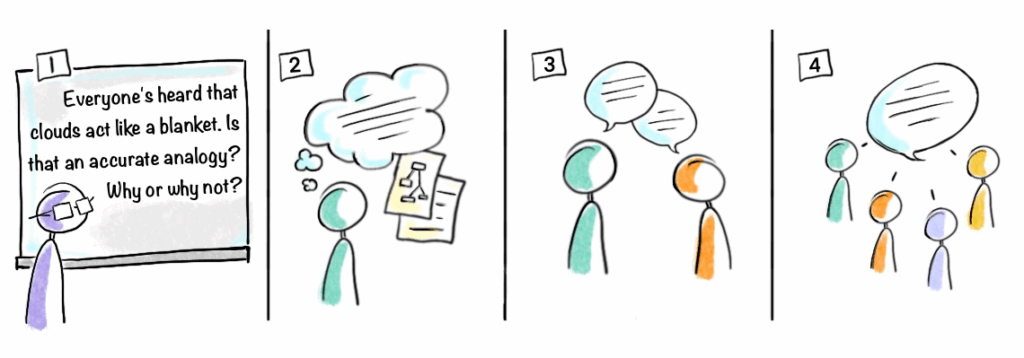
The cooperative learning strategy Think-Pair-Share was designed to increase students’ critical thinking skills and encourage engagement with peers and lesson content. Think-Pair-Share achieves this by engaging students in a social and constructivist exploration of course concepts. To implement the Think-Pair-Share model, an instructor first poses a question or challenge to the class. Learners then have several minutes to work independently to gather their thoughts or to identify a solution (Think). After several minutes have passed, learners share possible solutions with a peer and the pair then works together to hone their idea or solution (Pair). The pairs are then asked to share their ideas or solutions with the rest of the class (Share). If time allows, further whole-class discussion can continue and/or the instructor can clarify any misconceptions.
In addition to promoting engagement with fellow students and with the content, this activity can help instructors identify weak spots in students’ understanding.
This work is adapted from the original article licensed by the Penn State University under a Creative Commons Attribution-NonCommercial-ShareAlike 4.0 International License by the Center for Teaching & Learning Innovation (CTLI, Vermont State University).
Changes include an additional variation and the segment on encouraging students to share.
